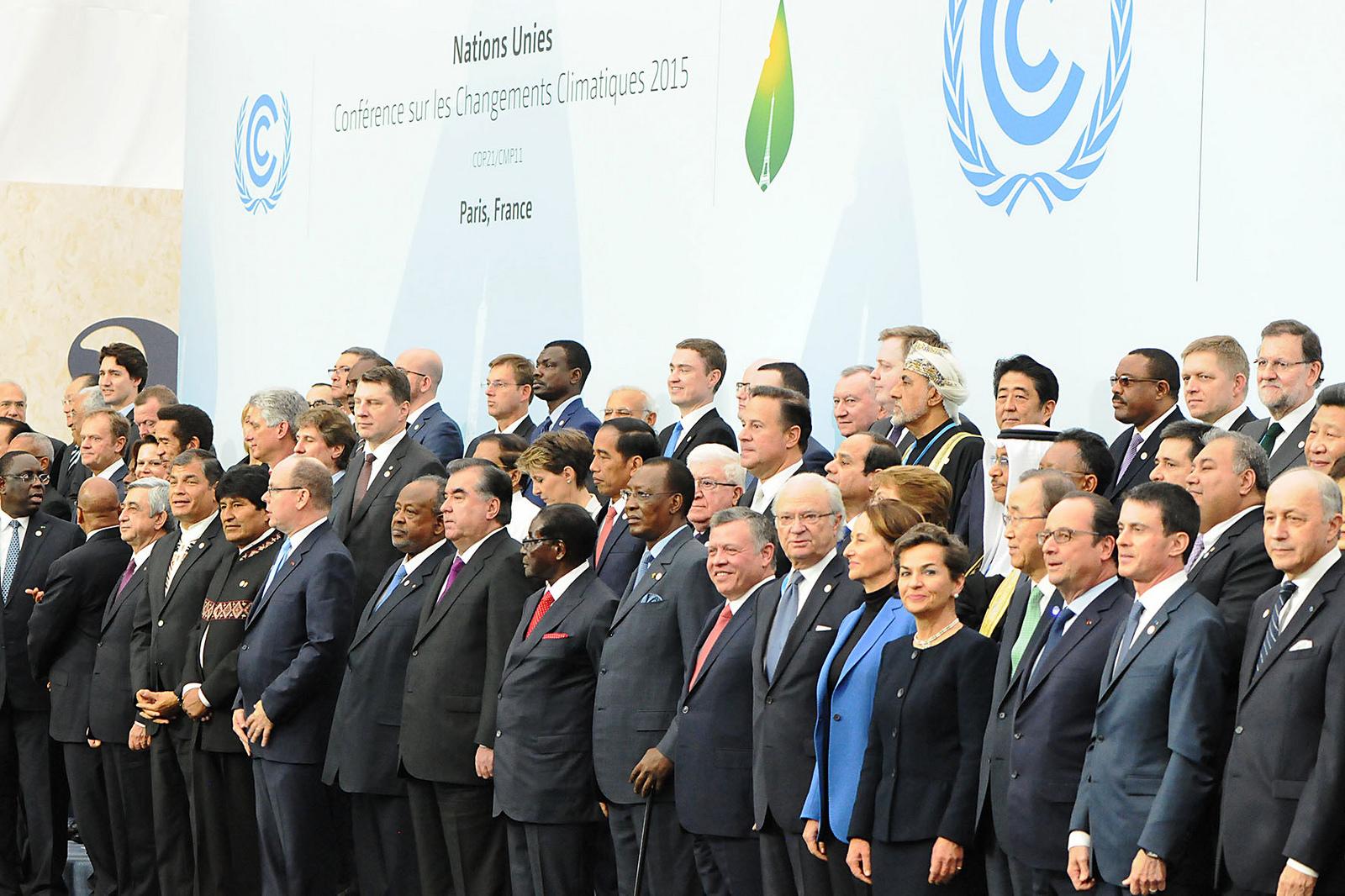-
Photo credit: UNFCCC
World leaders gathered today in Paris for COP21, a UN summit aimed at reaching a new international climate deal that can avert the worst effects of global warming. French President François Hollande opened the 21st annual Conference of Parties (COP21) summit by stating that the “future of the planet, the future of life” was at stake. “The challenge of an international meeting has never been so great,” Hollande said.
Delegates and leaders from 195 countries – along with members from scientific groups, the private sector, indigenous leaders, environmental activists and labour groups – will attend the important UN climate change conference that will take place between November 30 and December 11. Although, the heads of state will only be present during the beginning of the summit.
During these crucial days the delegates will work towards a new international climate change agreement that can replace the Kyoto protocol, which is the world’s only legally binding climate change agreement. The Kyoto protocol initially only covered rich and developed countries who are required to cut emissions by 2020 when the treaty expires. The protocol now covers only a handful of countries, including Australia and the member states of the European Union. The United States signed but never ratified the Kyoto protocol. It’s therefore crucial that a new global climate treaty, and one which includes all nations such as China which is currently the world’s biggest polluter, is reached and agreed on in Paris.
The delegates will try to reach a deal that will limit global warming to safe levels, i.e. the 2-degrees Celsius target that world leaders have endorsed. In order to keep global temperatures below 2-degrees Celsius, substantial cuts in greenhouse gas emissions are needed. If no action is taken and no agreement is reached at the Paris summit, the UN has said that the world will be on track for a +3 degrees increase in global temperatures. Scientists are warning that we are already halfway to that critical point as the world has already warmed 1 degree Celsius compared to pre–Industrial Revolution temperatures.
But the truth is that the 2-degrees target is not really a safe level and scientists and environmental groups – as well as several heads of state – are calling for emission reductions that will stop global temperatures to increase beyond 1.5 degrees Celsius. Countries most at risk from climate change, such as several island states and poorer developing countries, want to see a more ambitious climate agreement. But the likelihood that the rich and developed nations will agree to such reductions are highly unlikely. This question, about developed nations obligations and their historic responsibility, along with the question of economic assistance to developing nations will surely – and yet again – cause a rift between the delegates at the climate summit.
Speaking at the opening ceremony today in Paris, President Barack Obama said that the US recognised its responsibility to help limit global warming. “As the leader of the world's largest economy and the second largest emitter […] the United States of America not only recognizes our role in creating this problem, we embrace our responsibility to do something about it,” Obama said.
Similar speeches from world leaders could be heard during the 2009 climate change conference in Copenhagen – and that summit ended in a failure. But things are different this time around. More nations are now feeling the effects of global warming, the science on climate is clear and on point, and renewable energy technologies are improving while their costs are drastically decreasing. And this time around, the world’s two biggest greenhouse gas emitters, China and the US, are both supportive of a new climate deal.
But there are still several worrying obstacles ahead. While China may be more positive of a climate change agreement this time around, the commitment from India, the world’s third biggest emitter, remains uncertain. The US and EU also has different stances on how much of the new climate agreement should be legally binding – Obama and the US government are pushing for less as a legally binding treaty would be difficult to pass in the US Senate.
So far, more than 170 nations – representing 97 percent of the world’s total emissions – have submitted climate pledges to the UN ahead of the climate summit in Paris. But those pledges are currently too weak and will, according to analyses, result in a 2.7 to 3.3-degrees Celsius increase in global temperatures.
Despite all of this the hopes and expectations are high on the Paris climate summit to make substantial progress in the fight against climate change. And hopefully it won’t end in a whimper this time, as it did in Copenhagen back in 2009.



Recommended Comments
Join the conversation
You can post now and register later. If you have an account, sign in now to post with your account.